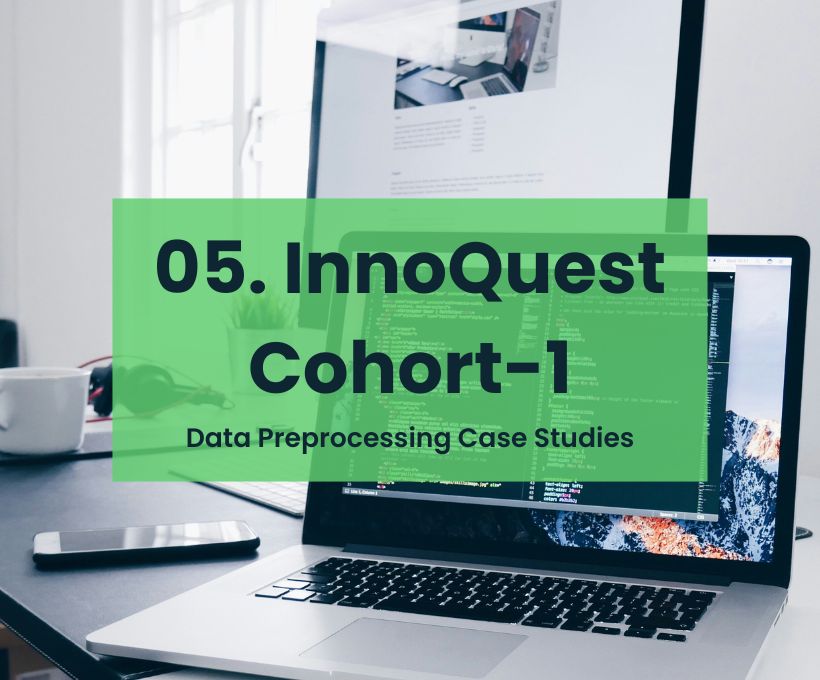As I progressed through the InnoQuest Cohort-1 professional AI/ML training program, Class 5 stood out as an especially impactful session. This class focused on applying real-world data science concepts through two distinct case studies: the California Housing dataset and the Absenteeism dataset (tracking employee absences). In this blog post, I’ll share my experiences, insights, and how these hands-on case studies have enhanced my existing knowledge.
Case Study 1: Analyzing the California Housing Dataset
We began with the California Housing dataset, a classic dataset widely used for regression and feature engineering tasks. This case study reinforced much of my previous knowledge regarding preprocessing and feature selection, while also introducing new concepts I had not fully explored before.
Key Concepts Explored:
- Outliers and IQR (Interquartile Range): While I was already familiar with detecting outliers, the class gave me a deeper understanding of how the lower and upper bounds affect outlier handling. I particularly appreciated the use of box plots to visualize outliers. The step-by-step calculation of lower and upper bounds using IQR solidified my grasp of this concept and its practical application.
- Handling Null Values: Although we didn’t dive into the practical handling of null values, we discussed their significance and explored common methods (like using mean, median, or mode) to address them. The class highlighted their importance and approach in real-world projects, helping me refresh my knowledge of handling missing data—an essential skill for any data science project.
- Heatmap for Feature Selection: Using a heatmap to visualize correlations between features was a great reinforcement of a technique I had already used. This visualization allowed me to filter out less relevant features, a crucial step in preparing data for machine learning models.
- Converting Categorical Data into Numerical Values: I was already familiar with using Pandas’ get_dummies() to convert categorical variables into numerical values, but the class provided a practical refresher. The tutor demonstrated the One Hot Encoding (OHE) process step by step, emphasizing its importance in machine learning models without delving too much into theory. This method of directly implementing OHE was clear and easy to follow.
My Best Takeaway from the California Housing Dataset:
- The outlier handling and their visualization through box plots were particularly insightful. The clarity gained from calculating lower and upper bounds using IQR was invaluable.
- The tutor’s approach to OHE was practical and straightforward. He demonstrated how to transform categorical variables without overcomplicating the process, which made it easier to understand and apply. However, I would have appreciated seeing the quicker method of converting categorical columns directly to integers using
drop_first=True.astype(int), as I am already familiar with it.
Case Study 2: Employee Absenteeism (Absenteeism at Work)
The next dataset we explored was Absenteeism—an employee absence dataset. I found this particularly interesting because I had previously worked with a School Management System project that involved similar data. This case study allowed me to apply my existing knowledge while also refreshing my understanding of datetime manipulation and categorical feature encoding.
Key Steps in Handling the Absenteeism Dataset:
- Datetime Handling: The process of handling the datetime column wasn’t my favorite part of the class, but it was still informative. The tutor first converted the column to a datetime object and then extracted the month from this column. We didn’t complete the entire preprocessing, but I found it helpful to apply my own approach by extracting year, month, and day from the column without converting it into a datetime object. My knowledge of lambda functions really helped with this task. I would have liked the tutor to touch more on the significance of datetime features in predictive modeling, but I look forward to exploring this further in the next class.
- Remaining Processing for Next Class: The class left some preprocessing steps unfinished, which created anticipation for the next session. This hands-on, step-by-step approach reinforced the value of tackling challenges incrementally.
My Best Takeaway from the Absenteeism Dataset:
- Extracting the year, month, and day as separate features and applying OHE to them will be useful in future projects.
- The OHE approach used in this class was more detailed than what I had done before. First, we created dummy columns and then dropped the first column (using
drop_first=True). This process gave me new insights into how categorical data should be transformed and made it much easier to understand, especially for newcomers to this concept.
Why This Experience Is Valuable:
The two case studies in Class 5 helped me refresh my knowledge while providing more clarity on key concepts. The hands-on approach helped solidify my understanding of data preprocessing and feature engineering, essential skills for tackling real-world data science projects.
This practical experience will be invaluable as I continue to advance in my AI/ML career, equipping me with the skills and confidence to solve complex data-related problems effectively.
Conclusion
The hands-on case studies with real-world datasets like California Housing and Absenteeism provided me with practical experience in data preprocessing and feature engineering. These are foundational skills every data scientist should hone as they build their expertise in the field.
If you’re a recruiter or potential client seeking a data science professional with hands-on, real-world experience, feel free to reach out. I’m excited to contribute my skills to impactful projects that drive business success and benefit the community.
